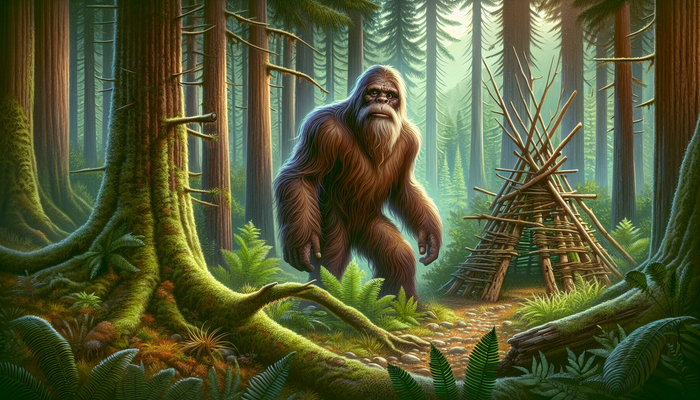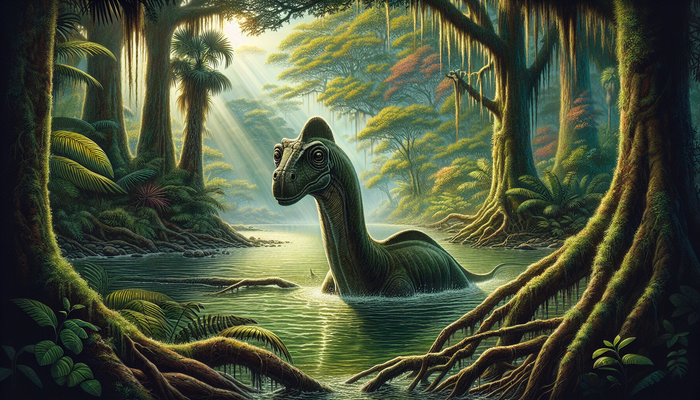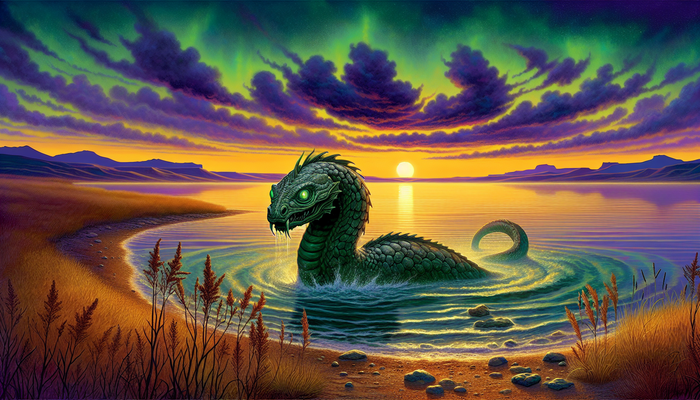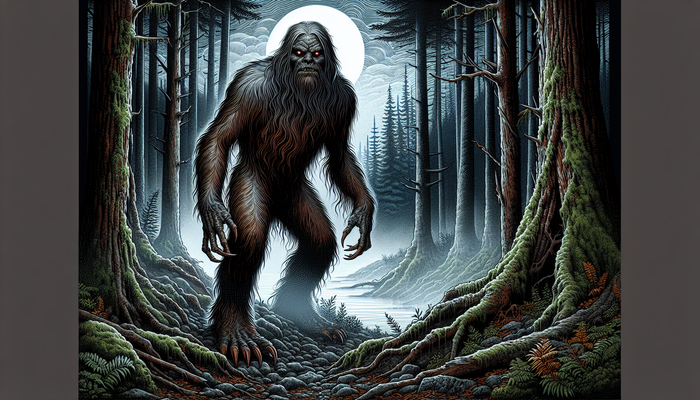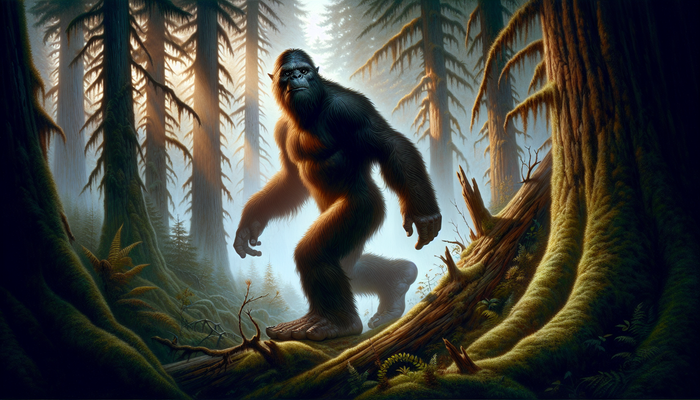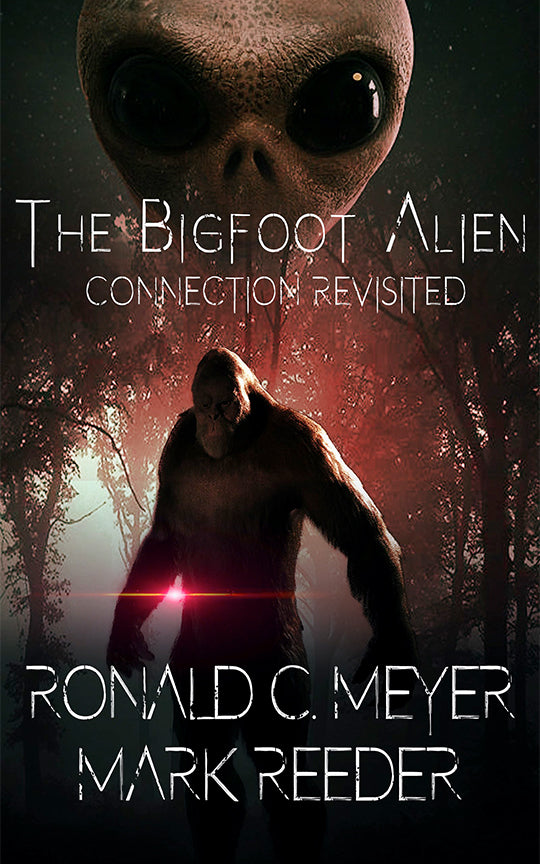Mysteries of Alaska's Elusive Bigfoot
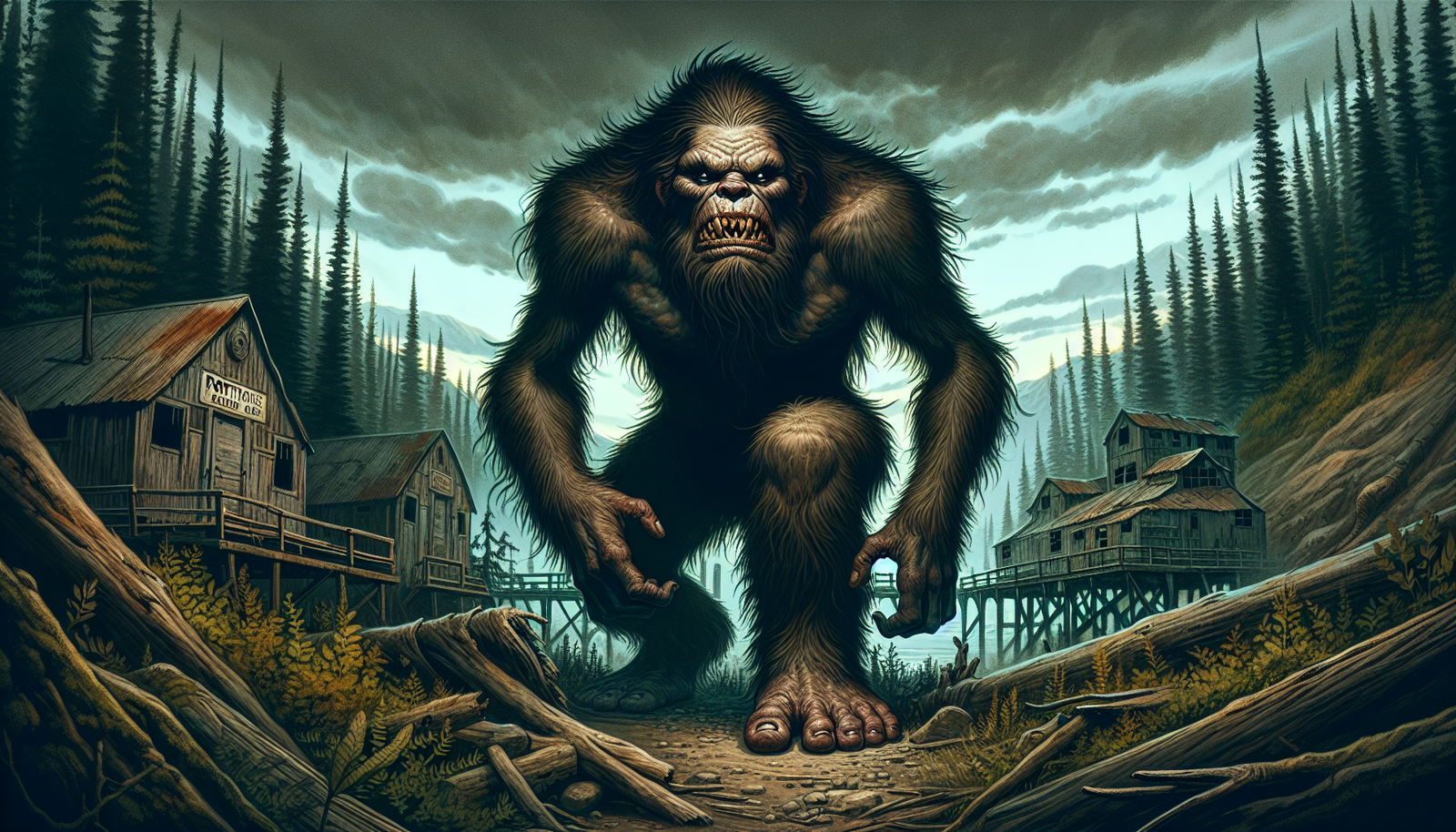
By Jack Sullivan, Cryptozoologist
Imagine a vast, untamed wilderness where legends of a massive, hairy, humanoid creature have persisted for generations. A place where the dense forests and rugged terrain hold secrets that have captivated the imaginations of locals and researchers alike. This is Alaska, the Last Frontier, a state that has long been a hotbed of Bigfoot activity.
As a dedicated Bigfoot researcher, I have spent countless hours poring over eyewitness accounts, analyzing physical evidence, and exploring the remote corners of this incredible state in search of answers. What I have discovered is a rich tapestry of indigenous folklore, compelling personal encounters, and enduring mysteries that have only deepened my fascination with this elusive creature.
In this article, I will take you on a journey through the most intriguing Bigfoot sightings, encounters, and cultural narratives from across Alaska. We will explore the chilling legend of the Portlock Nantinaq, examine eyewitness accounts from the Yukon-Kuskokwim Delta, delve into the indigenous legends of the Inupiat, Yupik, and Tlingit peoples, and investigate the high rate of mysterious disappearances in the Alaska Triangle.
Along the way, we will consider the theories and speculations surrounding the origins and nature of Bigfoot, and examine why Alaska's vast, untamed wilderness provides the perfect habitat for this elusive creature. So join me as we embark on a quest to uncover the mysteries of Alaska's Bigfoot, and perhaps shed light on one of nature's greatest enigmas.
The Legend of the Portlock Nantinaq
Our journey begins with one of the most chilling and well-known Bigfoot legends in Alaska: the story of the Portlock Nantinaq. Portlock, a once-thriving fishing and canning community on the southern edge of the Kenai Peninsula, was home to a few hundred residents in the early 20th century. The town was a hub of activity, with a bustling cannery, a sawmill, a school, and a post office.
But beneath the veneer of everyday life, a dark presence lurked in the surrounding forests. The Nantinaq, a Bigfoot-like entity with supernatural powers, was said to stalk the woods, preying on the unsuspecting villagers. According to local lore, the Nantinaq was responsible for a series of mysterious deaths, disappearances, and attacks that plagued Portlock in the 1940s and 1950s.
Eyewitnesses described the creature as a massive, hairy, humanoid being, standing over 8 feet tall and possessing incredible strength. Some claimed that the Nantinaq could shapeshift, taking on the form of a villager to lure its prey. Others spoke of its ability to control the weather, summoning fog and storms to conceal its movements.
As the attacks escalated, the residents of Portlock grew increasingly fearful. Hunters and fishermen would disappear without a trace, their mutilated bodies later discovered in the nearby lagoon. Children were warned not to venture into the woods alone, lest they fall victim to the Nantinaq's clutches.
Finally, in the 1950s, the elders of Portlock made the difficult decision to evacuate the town. Overnight, the once-thriving community became a ghost town, its buildings left to decay and its streets abandoned to the encroaching wilderness. The residents fled to nearby villages, carrying with them the haunting tales of the Nantinaq and the terror it had wrought upon their home.
Today, Portlock stands as a testament to the enduring power of the Bigfoot legend in Alaska. The crumbling remnants of the town serve as a reminder of the fear and reverence that these creatures inspire in the hearts of those who have encountered them. And while the Nantinaq may have driven the residents of Portlock from their homes, its presence continues to loom large in the imaginations of those who dare to venture into the wild places of Alaska.
Eyewitness Accounts and Encounters
While the legend of the Portlock Nantinaq is perhaps the most well-known Bigfoot story in Alaska, it is far from the only one. Across the state, eyewitnesses have reported countless encounters with large, hairy, humanoid creatures, each adding to the growing body of evidence surrounding the existence of Bigfoot.
One such eyewitness is Joe Morris, a man who has had not one, but two Bigfoot sightings in Alaska. Morris' first encounter occurred while he was working at a remote lodge. During a break, he and a friend decided to drive to the toe of the nearby Root Glacier to relax and take in the scenery. As they made their way along the road, they spotted something that neither of them had ever seen before: a Bigfoot with remarkably humanlike features.
Morris described the creature as standing upright, with a face that bore a striking resemblance to that of a human. It was covered in dark hair, and moved with a fluid, almost graceful gait. The sighting was brief, but it left an indelible impression on Morris, who couldn't shake the feeling that he had witnessed something truly extraordinary.
Years later, in 2022, Morris had his second encounter. While hiking a trail near the location of his first sighting, he came across another Bigfoot, but this one was far larger and more imposing than the first. Morris estimated that the creature stood around 12 feet tall and weighed between 2,500 and 3,000 pounds - a truly massive and awe-inspiring sight.
Morris' encounters are just two of the many Bigfoot sightings that have been reported in Alaska over the years. In the Yukon-Kuskokwim Delta region, for example, locals have long spoken of a creature known as the "Miluquyuliq" or "Hairy Man." This Bigfoot-like entity is said to inhabit the dense forests and tundra of the delta, and has been known to exhibit aggressive behavior towards humans.
Eyewitnesses describe the Miluquyuliq as a tall, shaggy creature, with long arms and a powerful build. Some have reported seeing the creature throwing rocks and sticks at people who venture too close to its territory, while others have heard it making unsettling whistling sounds, as if trying to lure its prey.
The high rate of mysterious disappearances in the Alaska Triangle has also fueled speculation about the presence of Bigfoot in the region. Since the 1970s, an estimated 20,000 people have gone missing in this remote area, which spans from Juneau to Anchorage to Barrow. While many of these disappearances can be attributed to the harsh and unforgiving nature of the Alaskan wilderness, some researchers believe that Bigfoot may be responsible for at least a portion of these cases.
One of the most compelling pieces of evidence linking Bigfoot to disappearances in the Alaska Triangle comes from a pair of travelers who found themselves stranded in a remote mountain pass during a snowstorm. According to their account, they encountered not one, but two massive, hairy creatures that exhibited aggressive and threatening behavior towards them. The creatures were described as standing over 9 feet tall, with broad shoulders and long, shaggy hair. The travelers managed to escape to the safety of their vehicle, but the encounter left them shaken and convinced that they had come face-to-face with something truly extraordinary.
These eyewitness accounts and encounters paint a picture of a state that is teeming with Bigfoot activity. From the remote forests of the Yukon-Kuskokwim Delta to the rugged mountain passes of the Alaska Triangle, these creatures seem to inhabit the wild places of Alaska, lurking just beyond the edges of human civilization. And while the evidence for their existence remains largely anecdotal, the sheer volume and consistency of these reports suggests that there may be more to the Bigfoot legend than mere myth and speculation.
Indigenous Legends and Folklore
The Bigfoot phenomenon in Alaska is not just a matter of modern eyewitness accounts and encounters. For the indigenous peoples of the state, these creatures have been a part of their cultural traditions and folklore for generations. From the Inupiat of the north to the Tlingit of the southeast, Alaska's Native communities have long told stories of giant, hairy, humanoid beings that inhabit the wild places of their ancestral lands.
One of the most fascinating of these legends comes from the Inupiat people, who speak of a creature known as the "Kokogiak." According to Inupiat folklore, the Kokogiak is a massive, multi-legged entity that resembles a cross between a polar bear and a human. It is said to leave behind enormous, sled-like tracks in the snow, and has been known to drag kayaks and their occupants beneath the ice, never to be seen again.
The Kokogiak is just one example of the many Bigfoot-like creatures that populate the legends and stories of Alaska's indigenous peoples. The Yupik, for example, tell tales of the "Qalupalik," a half-woman, half-aquatic creature that is known for snatching children who wander too close to the shoreline. The Qalupalik is said to lure its victims with a haunting, almost hypnotic song, before dragging them beneath the waves to an underwater lair.
Perhaps one of the most terrifying of these indigenous Bigfoot legends is the story of the "Goo-Teekhl," a giant, hairy creature with impenetrable skin that once terrorized the villages of the Tlingit people. According to the legend, the Goo-Teekhl would steal salmon from the Tlingit fishing nets and carry off villagers to be devoured in its forest lair. The Tlingit warriors, armed with bows and spears, were no match for the creature's incredible strength and resilience.
In a desperate attempt to rid themselves of the Goo-Teekhl, the Tlingit devised a plan to trap the creature. They dug a deep pit, filled it with sharpened stakes and kindling, and then baited it with the carcass of a freshly killed deer. When the Goo-Teekhl came to claim its prize, the warriors set the pit ablaze, trapping the creature in a roaring inferno.
For four days and nights, the Tlingit kept the fire burning, ensuring that nothing remained of the Goo-Teekhl but ashes. But as they sifted through the embers, a curious thing happened. Tiny specks began to rise from the ashes, taking to the air on delicate wings. These, the legend says, were the first mosquitoes, born from the charred remains of the vanquished Goo-Teekhl.
The story of the Goo-Teekhl is a powerful reminder of the deep-rooted connection between the Bigfoot phenomenon and the indigenous cultures of Alaska. These legends and folklore provide a unique window into the way that these creatures have been perceived and understood by the people who have shared the land with them for countless generations.
But the significance of these indigenous Bigfoot legends goes beyond mere storytelling. They offer valuable insights into the diversity and complexity of the Bigfoot phenomenon in Alaska, suggesting that these creatures may possess abilities and characteristics that go beyond the typical descriptions of a large, hairy, bipedal primate.
The shapeshifting abilities attributed to the Nantinaq, for example, or the aquatic nature of the Qalupalik, hint at a more multifaceted and perhaps even supernatural dimension to these creatures. They blur the lines between the physical and the metaphysical, the natural and the supernatural, in a way that challenges our conventional understanding of what Bigfoot might be.
At the same time, these indigenous legends also serve as a reminder of the deep respect and reverence that Alaska's Native peoples have for the natural world and the creatures that inhabit it. The Bigfoot of Alaska are not just monsters to be feared and hunted, but beings with their own place and purpose in the complex web of life that sustains the land and its people.
By exploring these indigenous legends and folklore, we can gain a richer and more nuanced understanding of the Bigfoot phenomenon in Alaska, one that goes beyond the simple question of whether or not these creatures exist, and instead asks us to consider the deeper meanings and significance that they hold for the people who have lived alongside them for generations.
Expeditions and Investigations
The search for definitive proof of Bigfoot's existence in Alaska has long been a driving force behind the efforts of researchers, cryptozoologists, and adventurers who have ventured into the state's remote wilderness. Over the years, numerous expeditions and investigations have been launched, each seeking to uncover the truth behind the countless sightings, encounters, and legends that have emerged from the Last Frontier.
One of the most notable of these expeditions was led by renowned Bigfoot researcher Cliff Barackman, who set his sights on the massive Lake Iliamna in southwest Alaska. For decades, locals have reported sightings of a large, seal-like creature known as the "Illie" lurking beneath the surface of the lake. Some have described the creature as being as long as 30 feet, with a head resembling that of a wolf and skin the color of tarnished silver.
Barackman and his team spent weeks scouring the shores and waters of Lake Iliamna, hoping to catch a glimpse of the elusive Illie. They interviewed eyewitnesses, set up camera traps, and even attempted to bait the creature with fish and other lures. But despite their best efforts, the Illie remained as enigmatic as ever, leaving Barackman and his team with more questions than answers.
The challenges faced by Barackman and his team are a testament to the difficulties of conducting Bigfoot research in a place like Alaska. The state's vast size, rugged terrain, and harsh weather conditions can make even the most well-planned expedition feel like a fool's errand. And with so much ground to cover and so few resources to work with, the odds of actually encountering a Bigfoot in the wild can seem vanishingly small.
But the lack of definitive proof has not deterred other researchers from taking up the challenge. David Paulides, author of the "Missing 411" book series, has spent years investigating the high number of mysterious disappearances that have occurred in Alaska's wilderness areas. Paulides believes that there may be a connection between these disappearances and the presence of Bigfoot in the region, and has devoted countless hours to poring over case files and interviewing witnesses in search of clues.
While Paulides' work has been met with skepticism by some in the scientific community, he remains convinced that there is a pattern to the disappearances that cannot be explained by conventional means. He points to cases where experienced outdoorsmen have vanished without a trace, leaving behind no signs of struggle or foul play. He also notes the high number of disappearances that have occurred in areas with a history of Bigfoot sightings and activity.
For Paulides and others like him, the search for Bigfoot in Alaska is not just a matter of curiosity or adventure. It is a quest for answers to some of the most enduring and perplexing mysteries of our time. And while the evidence for Bigfoot's existence in Alaska may be largely circumstantial at this point, the sheer volume and consistency of the reports suggests that there is something out there waiting to be discovered.
From Bigfoot to UFOs: Hangar 1 Publishing Has You Covered!
Explore Untold Stories: Venture into the world of UFOs, cryptids, Bigfoot, and beyond. Every story is a journey into the extraordinary.
Immersive Book Technology: Experience real videos, sights, and sounds within our books. Its not just reading; its an adventure.


